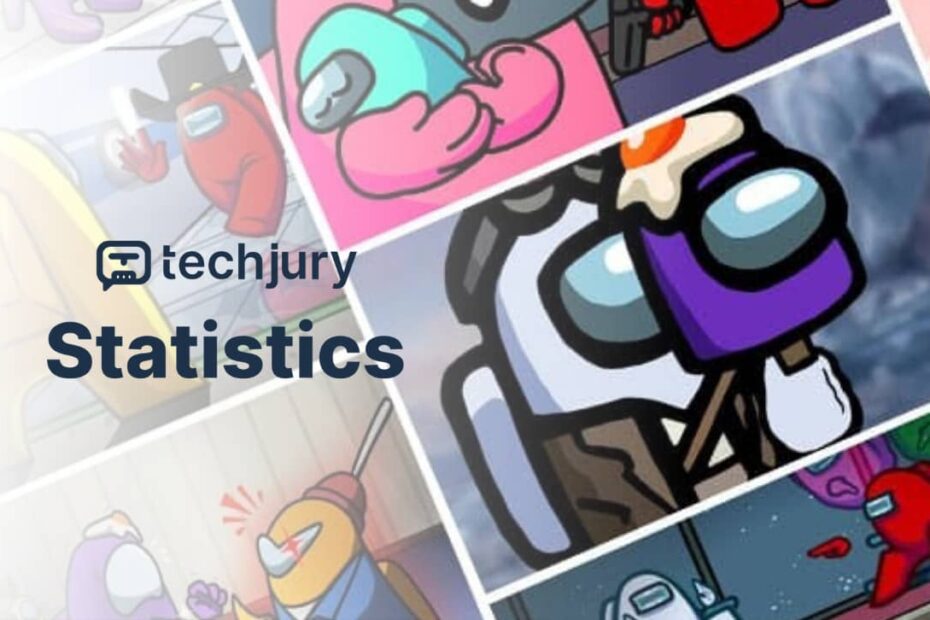The Unexpected Journey of a Social Deduction Masterpiece
When Innersloth released Among Us in 2018, few could have predicted the extraordinary trajectory this modest multiplayer game would undertake. What began as a relatively obscure indie project would transform into a global cultural sensation, capturing millions of players‘ imaginations and redefining social interaction in digital spaces.
The Statistical Genesis: Understanding Among Us‘ Remarkable Rise
To truly comprehend Among Us‘ impact, we must dive deep into its numerical narrative. The game‘s journey is not just a story of entertainment, but a complex data ecosystem revealing profound insights about digital engagement, social dynamics, and technological consumption patterns.
Player Base Evolution: From Obscurity to Global Dominance
In its initial launch phase, Among Us attracted minimal attention. The game averaged fewer than 100 concurrent players, a statistic that would dramatically shift during the unprecedented global pandemic. By mid-2020, the game experienced a meteoric rise, expanding its player base from negligible numbers to an astounding 217.2 million monthly players in January 2022.
This exponential growth wasn‘t merely a coincidence but a confluence of multiple factors: increased digital connectivity, social isolation, and the game‘s ingenious design that facilitated remote social interaction.
Demographic Breakdown: Who Plays Among Us?
Contrary to traditional gaming stereotypes, Among Us attracted a remarkably diverse player demographic. Contrary to expectations, the game‘s primary audience wasn‘t teenage gamers but young adults aged 20-30, representing a sophisticated, digitally native generation comfortable with complex social dynamics.
Geographic Distribution of Players
The game‘s global reach is particularly fascinating. While the United States comprises 36.56% of the player base—the largest single national representation—the game demonstrated remarkable international appeal. Countries like the United Kingdom (5.11%), India (4.67%), and Canada (4.12%) contributed significantly to its global ecosystem.
Platform Performance: A Mobile-First Phenomenon
One of the most intriguing aspects of Among Us‘ success is its platform distribution. Contrary to traditional PC gaming models, a mere 3% of players accessed the game through desktop platforms. The overwhelming majority—approximately 97%—engaged through mobile devices, highlighting a critical shift in digital entertainment consumption.
This mobile-first approach wasn‘t just a technical detail but a strategic masterstroke, allowing unprecedented accessibility and lowering entry barriers for potential players.
Economic Implications: Beyond Just a Game
The financial narrative of Among Us is equally compelling. From generating a modest $3.2 million in 2019, the game‘s revenue skyrocketed to $86 million by 2021—a staggering 2,687.5% increase that defies conventional gaming industry growth models.
Revenue Streams and Monetization Strategy
Innersloth‘s monetization approach was nuanced. Rather than relying solely on direct game sales, they created multiple revenue channels:
- In-game purchases
- Merchandise
- Streaming and content creation ecosystem
- Platform-specific revenue sharing
The game‘s YouTube channel alone generated an estimated $2.45 to $3.44 million in 2023, demonstrating the expansive economic potential beyond direct game sales.
Technological and Social Dynamics
Among Us represents more than a game—it‘s a sophisticated social experiment facilitated by technology. The game‘s core mechanics—deception, collaboration, and real-time decision-making—mirror complex human interaction patterns.
Psychological Engagement Metrics
Statistically, Impostors win 57.69% of game rounds, a fascinating metric suggesting players are more strategically inclined toward deceptive roles. This psychological preference reveals deeper insights into human behavior and risk-taking tendencies.
Future Trajectory and Industry Implications
As we analyze Among Us‘ journey, several critical observations emerge about the future of digital entertainment:
- Accessibility trumps high-end graphics
- Social interaction is a primary gaming motivation
- Mobile platforms will continue dominating digital entertainment
- Community-driven content can significantly amplify game popularity
Conclusion: A Data-Driven Narrative of Digital Evolution
Among Us isn‘t just a game—it‘s a comprehensive case study of digital engagement, social dynamics, and technological innovation. Its journey from an obscure indie project to a global phenomenon offers profound lessons about modern digital ecosystems.
For game developers, investors, and digital strategists, Among Us represents a blueprint for understanding emergent technological trends, player psychology, and the intricate dance between design, accessibility, and social connectivity.
As we look forward, the lessons from Among Us will continue to inspire and inform our understanding of digital entertainment‘s complex, ever-evolving landscape.
